
Nicholas Roerich as a fine artist and connoisseur of beauty attracted complex, great images, be it mountain peaks or heroes of the spirit. In the work of Roerich there is an exceptional cycle of paintings.
The artist creates a series of “Holy Mountains”, a series depicting devotees of the spirit, saints. The image of the saints, the heroes of the spirit, shows how high a person’s spirit can rise, how firm and strong faith can be. The tops of the mountains and the tops of the human spirit are the key motifs of Roerich’s creativity. Nicholas Roerich creates many paintings related to this topic, one of which can rightly be considered the painting “St. Sergius of Radonezh”, written by him in 1932.
Not an easy task faced the artist – to embody the image of the saint. In this work, the artist deliberately departs from the age-old traditions and religious canons of the image. A gentle calm is read in the guise of Sergius of Radonezh. This is a true symbol of great spirituality and morality. Creating such great canvases, the artist helps us more thoughtfully and with trepidation to the images of great historical figures, to turn to descriptions of life and deeds of saints, in the name of enlightenment of our own life and the search for truth.
Roerich especially appreciated the appearance of such a saint as Sergius of Radonezh. The artist devoted more than one picture plot to this image. Cloth “St. Sergius of Radonezh” was written in 1932 and is currently stored in the Tretyakov Gallery.
The artist depicted St. Sergius as the central character, large, volumetric and full-length. Roerich only partially observes the traditional style of icon painting. For the thin, tall figure of the saint, the Russian monastery was discharged. The vivid image of the monastery is painted in open, unconventional for orthodox, canonical painting in colors using shades of pink and yellow.
The monastery symbolizes the joy of glorifying the doctrine of the saint, the bright rejoicing of the disciples who glorify the great word of St. Sergius of Radonezh. Fragmentally depicted marching warriors with the image of a saint. This image reminds us of the historic meeting of St. Sergius and Dmitry Donskoy before the Don Slaughter. A little later, the Kulikov battle turned out to be a great victory, a vivid example of the strength of the spiritual principle of the Russian people and their faith.
The image of the All-Seeing Eye at the very top of the canvas is an ancient divine sign. The whole picture is precisely subordinated to this great divine world order, the structure of the whole world, like a sanctuary. And Sergius of Radonezh himself holds the temple in front of him – a symbol of Russia’s spiritual rebirth. Russia embraces this great image of the temple, and the sign of the holy trinity on the matter of the saint is called to protect and direct Russia to the light in three time dimensions.
In the lower part of the canvas, an inscription, drawn by a beautiful old ornamental-decorative letter, shows the meaning of which shows the strength of Roerich’s foreboding of the imminent, inevitable and terrible ordeals for Russia. In spite of everything, the artist believed in his country, which did not accept the work of Roerich until the artist’s death in 1947. However, he fully believed in the future greatness of Russia, appreciated the great past of his native land.
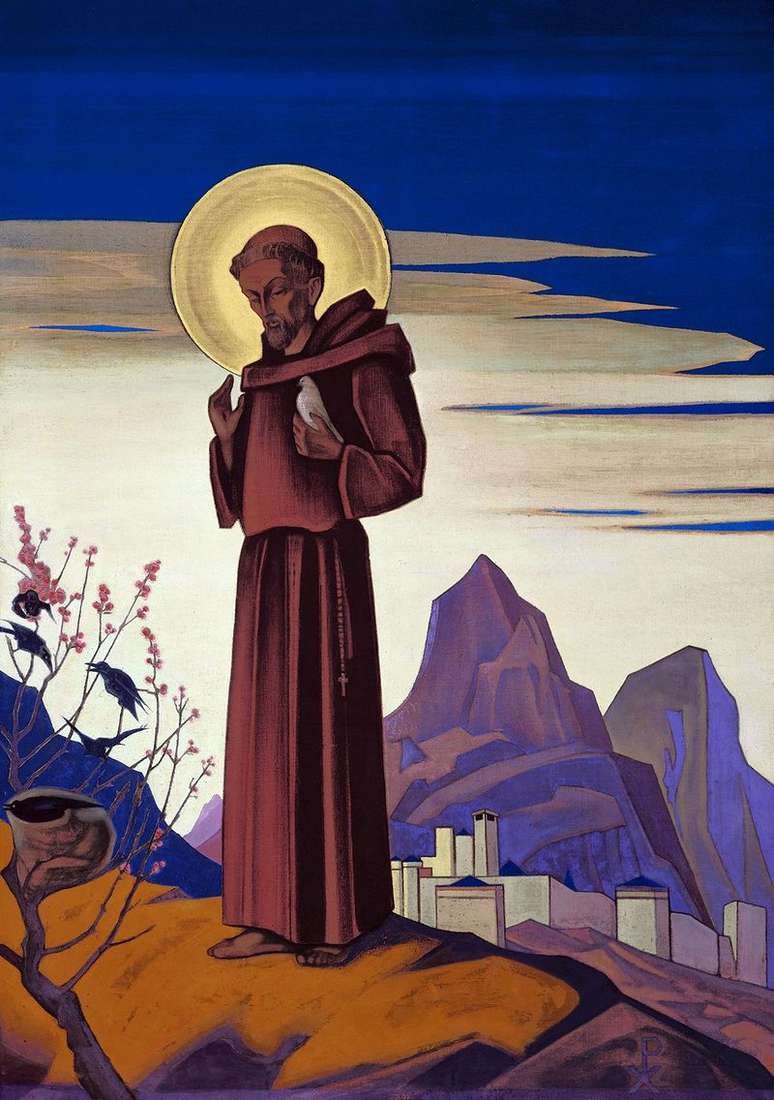 Saint Francis by Nicholas Roerich
Saint Francis by Nicholas Roerich Sergiy the builder by Nicholas Roerich
Sergiy the builder by Nicholas Roerich And we open the gate by Nicholas Roerich
And we open the gate by Nicholas Roerich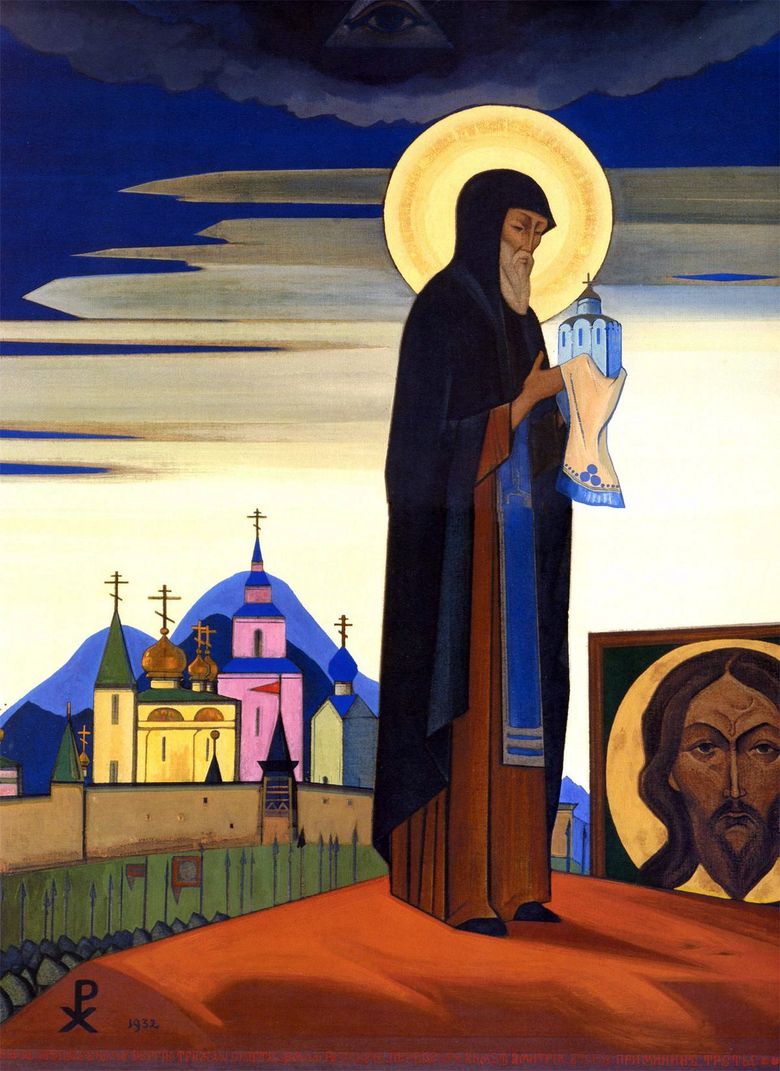 Saint-Serge de Radonezh – Nicholas Roerich
Saint-Serge de Radonezh – Nicholas Roerich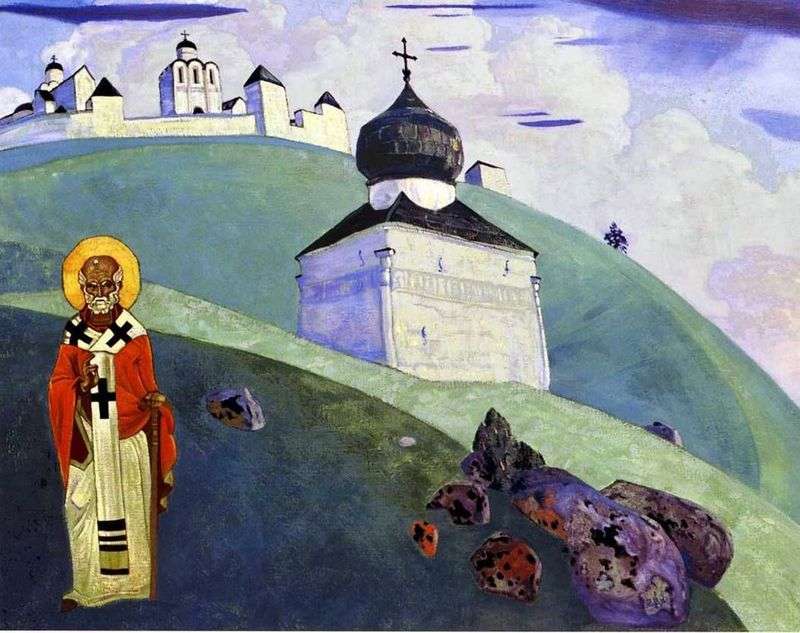 Saint Nicholas by Nicholas Roerich
Saint Nicholas by Nicholas Roerich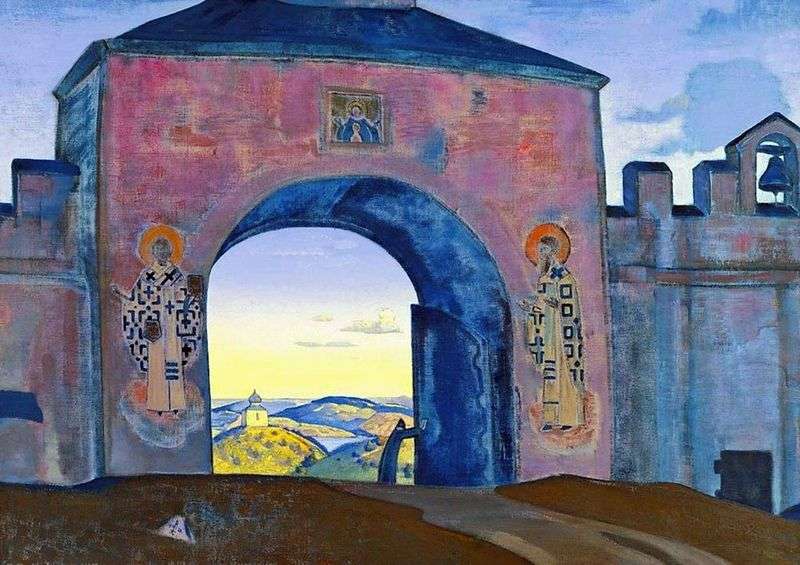 And open the gate by Nicholas Roerich
And open the gate by Nicholas Roerich The Appearance of Our Lady to Sergius of Radonezh
The Appearance of Our Lady to Sergius of Radonezh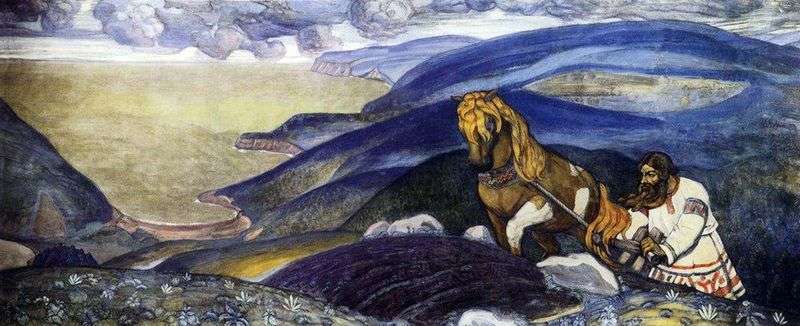 Mikula Selyaninovich by Nicholas Roerich
Mikula Selyaninovich by Nicholas Roerich